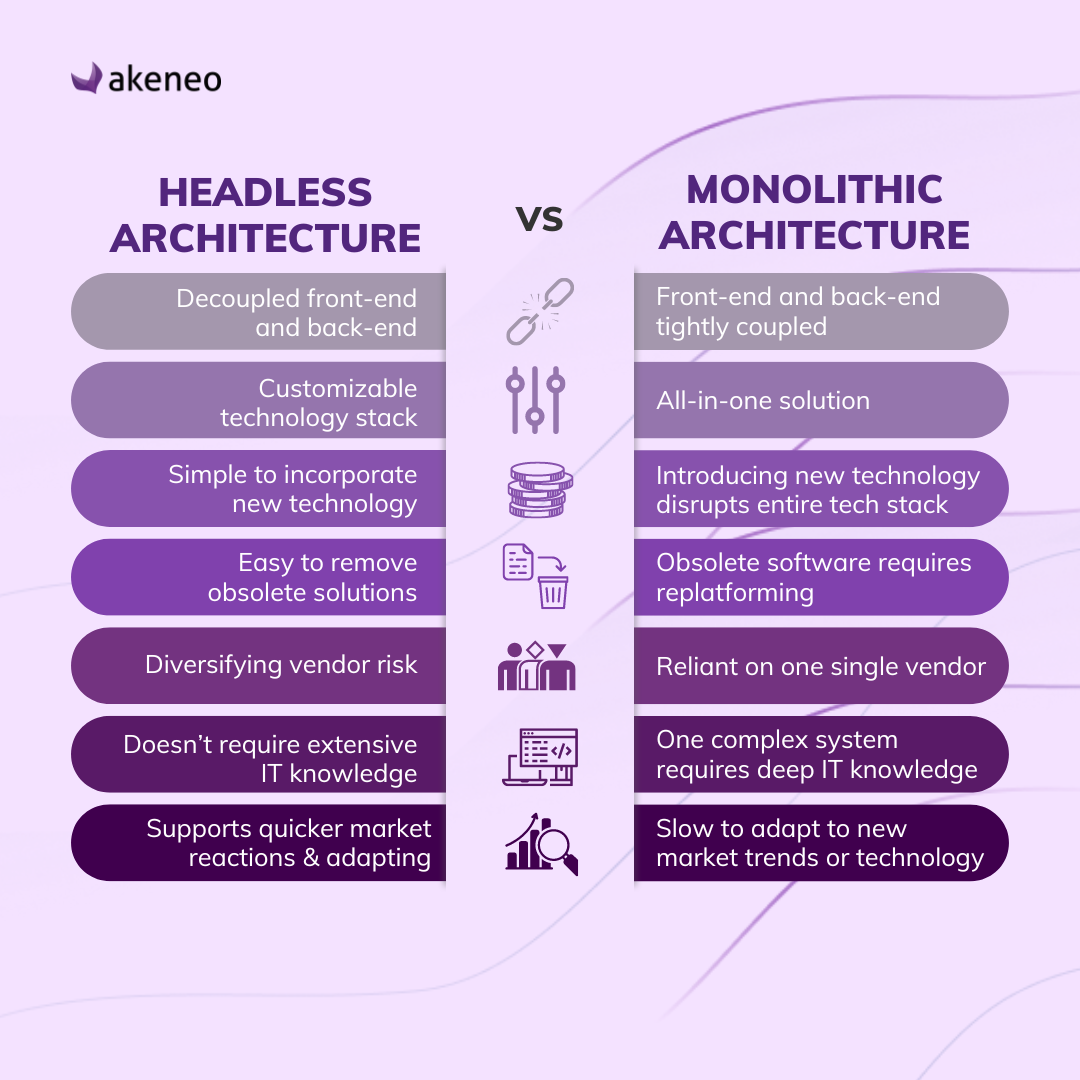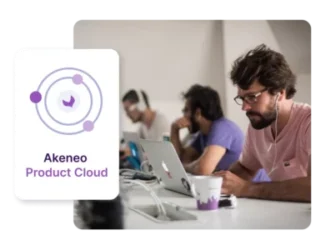Headless commerce provides the scalability and flexibility that brands and retailers need to grow, but requires a strong foundation of product information management (PIM). How do you decipher which PIM tool best supports your migration?

Table of Contents
Keywords
But when it comes to your eCommerce tech stack, clutching on to legacy platforms and outdated processes can lead to more harm than good.
With global online spending projected to hit $6.3 trillion by the end of the year and expected to make up almost 22% of global retail sales, there is a huge and ever-growing eCommerce market available at your fingertips.
But if you don’t have the infrastructure in place to take advantage of this massive market, your growth and scalability will be severely stunted.
We at Akeneo have seen a lot of interest in the market to move to new commerce technology architectures that bring the agility and flexibility that brands and retailers need to tackle the growth challenges of today and tomorrow.
Traditional commerce architecture offers an all-in-one solution from a single vendor, providing the basic capabilities needed to activate an eCommerce site. And while this worked for a while to provide a singular, standard digital experience to consumers, the digital landscape has expanded at such a mind-boggling rate that traditional architecture just can’t keep up anymore.
Headless (sometimes known as composable) commerce architecture provides a modular, best-of-breed approach that enables organizations to grow and scale as they need.
Headless commerce architecture is a development approach that enables organizations to activate their entire product record across every channel by leveraging best-of-breed commerce vendors composed together into a singular, custom-built application.
This type of software model allows teams to create an ecosystem that is customized to meet their organization’s specific business needs.
Instead of the traditional, monolithic approach, headless architecture communicates via API. Each individual solution can be updated or replaced at any time without disrupting the rest of the system, meaning that your eCommerce stack is flexible and can scale to meet your needs.

Headless commerce works by decoupling and then orchestrating front-facing capabilities from back-office applications and integrations, allowing brands and retailers to implement new product information across all channels at a much faster rate than before without having to touch the back-end infrastructure.
Not only does this bring greater agility and control to brands and retailers, but it also means that less technical knowledge is needed to push product information updates and new features.
The decoupled nature of headless commerce means that your tech stack is modular and adaptable; you get to select which technologies fit your needs best and can replace or update platforms as needed without disrupting your eCommerce experience.
With a headless architecture, brands are able to:
Now that we understand the benefits of a headless commerce architecture, you may be ready to jump on the composable bandwagon right away, and that’s great!
But transitioning from a traditional architecture to a headless one can be intimidating and difficult, especially if your organization isn’t mature enough to have the required resources to make the switch on-time and within budget.
From the types of data needed to the people and processes involved to the related technologies that need to be integrated into this new architecture, there are many factors that need to be taken into account when considering the transition to headless architecture. Where should you even start?
The recommended first step is to get the underlying product data and content organized and ready for migration.
There are two main reasons for this: one, product information is a critical foundation to how you deliver product experiences, irrespective of the architecture used or the channel it appears on. As more and more digital touchpoints emerge every single day, we can no longer predict where or when a consumer will first discover or interact with a business, so establishing and maintaining consistent and compelling product experiences across every channel is crucial.
With a traditional architecture, this is extremely difficult. Personalizing and syndicating product information across channels with a monolithic platform is nearly impossible, and requires a lot of redundant labor and manual efforts.
Headless commerce eases and automates this process, but requires a strong foundation of product information to be truly successful. After all, product information can’t be activated across all channels if we don’t even know where it lives.
Secondly, the modular nature of headless commerce means it’s made up of individual, best-of-breed applications, each handling a specific aspect of the overall shopping experience (recommendations, merchandising, shopping cart, payment, and so on).
Product information flows through many of those applications, all of which are orchestrated via standardized APIs. Therefore, the product information needs to be well-structured, consistent, complete, accurate (and of course, compelling) to be handled reliably and correctly.
This is where a Product Information Management (PIM) tool comes into play. Creating a central repository of product information allows your team to manage, organize, and optimize your product data to more easily flow through your other technologies and syndicate to your channels.
Not all PIM solutions are created equal. To implement a transition to a headless architecture, you need a modern PIM that is built to support such a modular structure.
Founded in 2020, the MACH Alliance is a not-for-profit institution that advocates for open and best-of-breed technology ecosystems.
MACH stands for:
The MACH Alliance is a global community of individuals and businesses that have come together under these guiding principles. Their mission is to future-proof and propel current and future digital experiences with open and connected enterprise technology.
The vendor-neutral alliance drives awareness of the benefits of modern, best-in-class ecosystems that provide flexibility and openness as a key differentiator and driver of competitive advantage.
With their focus on modularity and best-of-breed applications, organizations who are members of the MACH Alliance are guaranteed to help support your transition to a headless architecture.
In March of 2022, Akeneo joined several of our established technology partners by becoming a certified Independent Software Vendor (ISV) member of the MACH Alliance. Openness and innovative integrations lie at the heart of Akeneo’s PIM software, and we’ve been accredited for embracing MACH philosophies and deliver MACH-certified services.
MACH technologies are the cornerstone for organizations looking to build sustainable, future-ready commerce and business models. Akeneo deserves this certification as another example of a true MACH champion that represents the category well through its operations and PIM architecture.
Future-proofing your business means that you need to be able to create compelling and consistent product experiences across all your owned and unowned channels, and that is significantly more simple when you have a modular, headless approach that allows you to plug-and-play technologies as you scale. But jumping straight into this transition without a solid foundation of product information can spell trouble.
Implementing a MACH-certified PIM, like Akeneo, allows your team to centralize, organize, and optimize your product information and set you up for a successful migration to headless architecture.
If you’re interested in discovering how a MACH-certified PIM can help you transition to a headless architecture, please don’t hesitate to reach out to us today.
Discover how Akeneo’s MACH-certified PIM can prepare you for a successful migration to a headless architecture.
